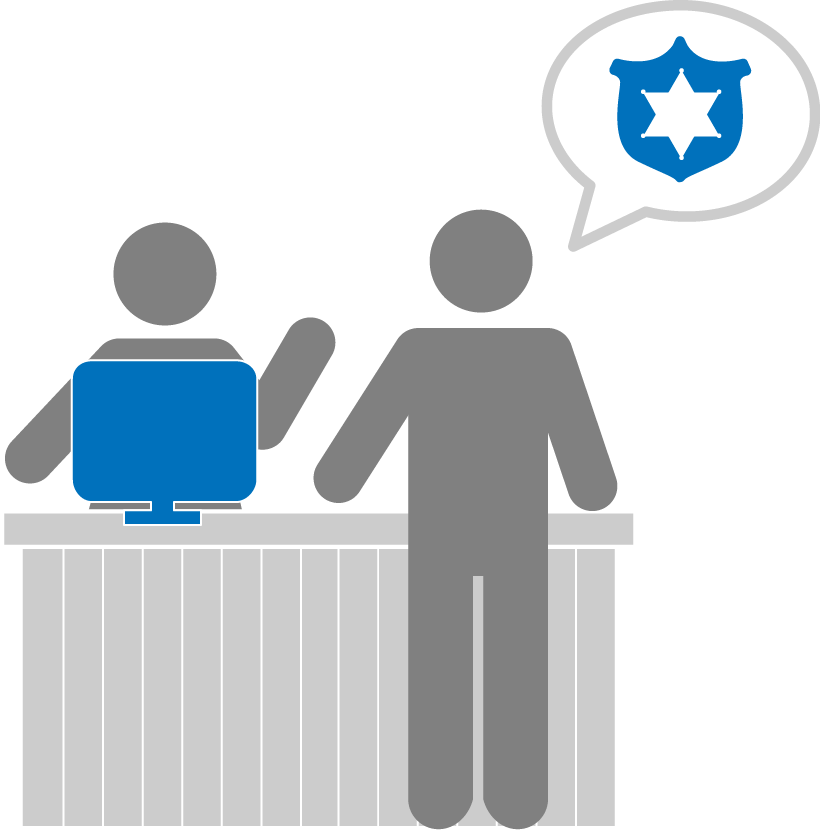After all, gullible employees lead to security breaches.  By: Brand BarneyHumans want to trust other humans. If I struck up a conversation with a gentleman in a suit at the bus stop who explained his life story, why would I distrust him? We all have a natural tendency to believe what trustworthy-looking people tell us. And that’s what gets us in trouble.
By: Brand BarneyHumans want to trust other humans. If I struck up a conversation with a gentleman in a suit at the bus stop who explained his life story, why would I distrust him? We all have a natural tendency to believe what trustworthy-looking people tell us. And that’s what gets us in trouble.![]() Tweet
Tweet What is social engineering?Social engineering is a way of manipulating people socially so that they trust the social engineer and eventually provide some sort of useable data. For instance, instead of trying to find software vulnerabilities to exploit for sensitive data, a social engineer might try to trick someone into divulging an administrative password without realizing it.Have you ever seen the crime drama Catch Me If You Can? Frank Abagnale, the main character, is a master of social engineering. He convinces people he’s an airline pilot, doctor, and attorney by forging documents and acting like he belongs. The scary thing is, it’s a true story.What’s the problem with social engineering?
What is social engineering?Social engineering is a way of manipulating people socially so that they trust the social engineer and eventually provide some sort of useable data. For instance, instead of trying to find software vulnerabilities to exploit for sensitive data, a social engineer might try to trick someone into divulging an administrative password without realizing it.Have you ever seen the crime drama Catch Me If You Can? Frank Abagnale, the main character, is a master of social engineering. He convinces people he’s an airline pilot, doctor, and attorney by forging documents and acting like he belongs. The scary thing is, it’s a true story.What’s the problem with social engineering?
© SecurityMetrics | www.securitymetrics.com/pci | 801.705.5665 |
Hey guys and welcome back to the SecurityQ, your source for business data security Today on the SecurityQ, we’re back with part two of social engineering. Alright guys. Last time on the SecurityQ, we talked a little about social engineering and I showed you a pretty sweet example. But today I interviewed two security experts: an auditor and forensics investigator. Here’s what they had to say about social engineering. Social engineering, the part that frustrated us was how easy it was to do this with customers. We’d say, hey we’re here to work on your network or work on your computers, can you show me to your server room? And they’d lead us right back there. They wouldn’t ask us, you should know the password, and I’m gonna give it to you. They’d just give us the password. We would send a letter later on and tell them how easy it was to get inside. They’re always quite surprised. Usually when you go to a company they feel like their people are trained very well. I’ve worked at customer sites where they’ve been really secure and they’ve done a much better job. Bu by far, most companies are lax on their rules and people need better training. There’s another way that it’s kind of unusual. That merchants really need to be on guard for the social engineer. For example, there was a an investigation we were involved in where this guy had very limited IT skills, but he knew how to talk. He simply opened up the yellow pages and started calling all the restaurants in a particular chain that were in this area. He said, I have to do some system maintenance and I can walk you right through it. We’ll do it together over the phone. Enabled a remote session with them, and virtually while he was on the phone with the manager, installed malware. Alright guys, I’ve said it before and I’m gonna say it again. You may have the best technology on the face of the planet, but if you don’t protect yourself from the social threat, you’re leaving your business wide open. Our advice? Train your employees against the social threat and remember to always prepare because your security matters. Well guys that’s all the time we have today on the SecurityQ. But as always, we want to hear from you. So post your questions in the comments below and don’t forget to subscribe. See ya next time on the SecurityQ.wistiaEmbed = Wistia.embed(“5mi8u7k6kc”); Here are some common ways social engineers try to socially engineer us Steal badges and credentials in unlocked carsGo to the local donation store and buy old company T-shirtsPose as janitorial staff to get into a building“Can you hold the door for me? I don’t have my badge.”Pose as an IT person that needs to fix the networkTry unlocked doors around the backside of buildings Pose as law enforcement conducting an inspection Dumpster dive for sensitive documents![]() Here’s what happens when I try to socially engineer someone.
Here’s what happens when I try to socially engineer someone.
© SecurityMetrics | www.securitymetrics.com/pci | 801.705.5665 |
Hey guys, welcome back to the SecurityQ, your source for business data security. Today on the SecurityQ, we’re gonna discuss one topic. The social threat to your business. Here’s the game if you don’t mind if I try. Out of the things you have inside, would you say would be most valuable? The thing inside your pockets We’ll take your front pocket here, do you have something inside? You don’t mind if I bring this out in public do you? I believe that’s really strange. So you have anything else? Okay guys, so we just saw a pretty sweet video of a social engineer, or a con man, stealing personal items from a guy. I have to tell you I’m quite impressed with his skill. Now a lot of businesses ask me, what is a social engineer and how does that apply to my business? The truth is, a social engineer is somebody that uses social interaction to steal data. It could be personal, that data could be physical, that data could be coming from your trash can. It’s data they want. And they’re gonna use any and all tactics to get that data. Now I’m gonna show you what social engineering looks like at an actual business and I’m personally going to do it. Jive Communications, Voice over IP made affordable and reliable, has graciously given us permission to run a simulation. Everyone involved is an actor. Hi how are you? My name is Brandon Barney and I’m the IT director upstairs. I was monitoring our logs this weekend, and it looked like your Wi-Fi was bleeding into ours. If I could jump onto your computer systems real quick and make sure that’s not the case, I’d sure appreciate it. This employee has one have two choices. They’re either going completely fold and give me access to the network, or they’re gonna shut me down. The question is, what are you and your employees going to do? If you’re looking for information or tactics used by these criminals, check out the link for information from PC world. Our advice? Train your employees and test them. There are lots of professionals out there that can assist you in doing this. Remember, your security matters. Well guys, that’s all the time we have for today on the SecurityQ. If you’re looking for detailed information on social engineering, I’m going to be posting a pretty sweet video response. Remember, we want to hear from you so post your questions in the comments below, and don’t forget to subscribe. See you next time on the SecurityQ.wistiaEmbed = Wistia.embed(“deuhcjmzzj”); How to avoid being a victim of social engineeringThe best way to avoid being socially engineered is by educating yourself and your employees. Here are some points you should touch on during training:You should be slightly paranoid (better to be safe than sorry)Social engineers don’t sneak around. They’re confident and friendly. They look like they belong. Don’t be pressured by their convincing ways.Never give out your username/password, badge, PIN, ID number, credit card, or schedule. In essence, never give out sensitive information about you or your company.Ask for a contact to verify why the person needs the information they’re asking forDon’t hold secure doors open for people you don’t knowThe only way to identify if your employees have soaked in all that social engineering knowledge is to test them. You can don a disguise and test them yourself, or enlist the help of a social engineering professional (also called a pen tester), to come onsite and test your employees, experiment with your physical security, and see what interesting information they can find in your trash cans.Have a business security question? Tweet me and you may see your question answered on the next SecurityQ.Brand Barney (CISSP) is an Associate Security Analyst at SecurityMetrics and has over 10 years of compliance, data security, and database management experience. Follow him on Twitter and check out his other blog posts.
 After all, gullible employees lead to security breaches.
After all, gullible employees lead to security breaches.